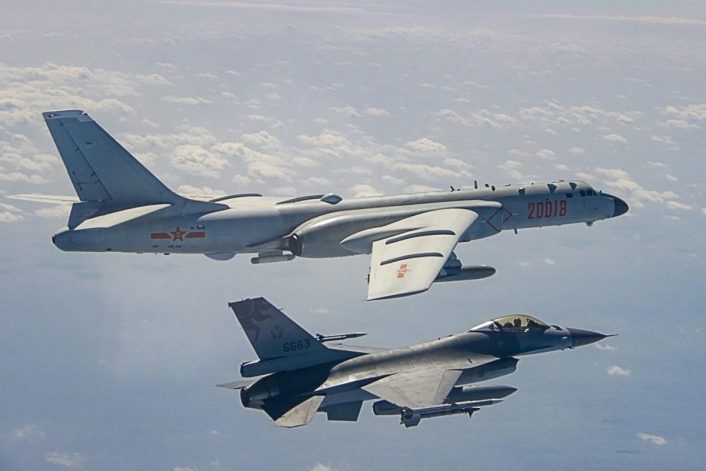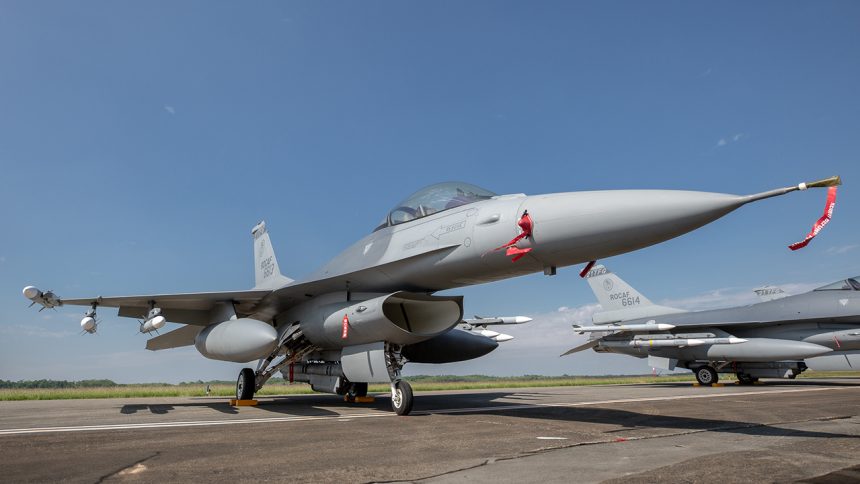According to the ROCAF (Republic Of China Air Force), the aircraft suffered minor damages and should return to service soon.
A 7.2-magnitude earthquake, the biggest in 25 years for Taiwan, hit the coast off Hualien, on the eastern coast of the island, at 7.58AM LT on Apr. 3, 2024 killing nine people and injuring more than 900. Local TV aired images of buildings
Television aired footage showing buildings askew in the rugged, thinly populated eastern region of Hualien, close to the epicenter of the earthquake.
According to Reuters, at Hualien Air Force Base, home of the 5th Tactical Composite Wing of the ROCAF, equipped with F-16V and F-5 aircraft, six F-16 fighter jets were slightly damaged due to collisions. The Air Force Command stated that the affected aircraft suffered minor scratches and damage (due to the shaking and movement of the boarding ladder), which could be immediately repaired and won’t affect combat readiness.
As a side note, few hours before the quake hit Taiwan, the Taiwanese MOD had announced on social media that 30 Chinese aircraft and 9 ships had been detected around the island with 20 aircraft entering the ADIZ (Air Defense Identification Zone), in the last of series of military drills that have been going on for several days.
30 PLA aircraft and 9 PLAN vessels operating around Taiwan were detected up until 6 a.m. (UTC+8) today. 20 of the aircraft entered Taiwan’s northern, middle line, and SW ADIZ. #ROCArmedForces have monitored the situation and employed appropriate force to respond. pic.twitter.com/LkVR7XQ3LD
— 國防部 Ministry of National Defense, R.O.C. 🇹🇼 (@MoNDefense) April 3, 2024
Taiwanese Vipers
ROCAF is equipped with upgraded F-16V Block 72 aircraft that ca carry a wide array of weapons: AIM-120C-7 AMRAAM, AIM-9X/L Sidewinder air-to-air missiles, GBU-12 Paveway II laser-guided bombs; AGM-65 Maverick air-to-ground guided missile; Mk-82 and Mk-84 “dumb” bombs, GBU-10 Paveway II laser-guided bombs. Moreover, Taiwanese F-16s are among the few with the AGM-84 Harpoon capability, which is considered as a deterrent against the People’s Liberation Army Navy (PLAN) operations in the Taiwan Strait.
Taiwan has become the first operator to achieve the Full Operational Capability with the upgraded F-16V Block 72 in November 2021.
Taiwan signed a contract to upgrade the fleet of F-16A/B Block 20 fighter jets in 2012, with the program dubbed “Peace Phoenix Rising”. Initially, it was decided to upgrade 144 Vipers (as the F-16 is dubbed by the pilots), but three of those were later lost in mishaps and thus the final number of jets to be upgraded is 141, of which 64 have already completed the upgrade process and have been handed over to the RoCAF. It is not known if all 64 aircraft are currently based at Chiayi, but it is expected that the 5th TFW at Hualien Air Base, another F-16 Block 20 base, will receive the upgraded F-16V too.
Among the new systems installed during the upgrade we can find the APG-83 AESA (Active Electronically Scanned Array) radar, a new Center Pedestal Display (CPD), Link 16 datalink, full NVIS (Night Vision Imaging System) and JHCMS II (Joint Helmet-Mounted Cueing System II) compatibility, a new Embedded GPS/INS (EGI), a modern commercial off-the-shelf (COTS)-based avionics subsystem, a high-volume, high-speed data bus.
The first jet was upgraded as a prototype by Lockheed Martin at their facilities in Fort Worth (Texas) and flew for the first time in 2015, with Taiwan’s Aerospace Industrial Development Corporation (AIDC) taking over a year later the works to upgrade the F-16 locally. The work started slowly, with the first four F-16Vs delivered only in 2018, but then proceeded at a rhythm of at least 24 aircraft per year once all problems were solved. The retrofit of the whole fleet is planned to be completed by 2023.

A ROCAF F-16 fighter jet shadows a PLA Airforce Bomber that had approached the island of Taiwan in 2020. (Image credit: ROCAF)
In the meanwhile, Taiwan also acquired in 2019 66 newly built F-16V Block 70 that are expected to be delivered from 2023 to 2026. The new aircraft will reportedly be assigned to the 7th TFW at Taitung Air Base. Earlier this year, the “Peace Phoenix Rising 2” was announced, with the intent of fielding new capabilities for the Automatic Ground Collision Avoidance System (AGCAS), AGM-88 HARM (High Speed Anti-radiation Missile), radar software improvements and an Advanced Identification Friend or Foe in addition to the already planned upgrades.









